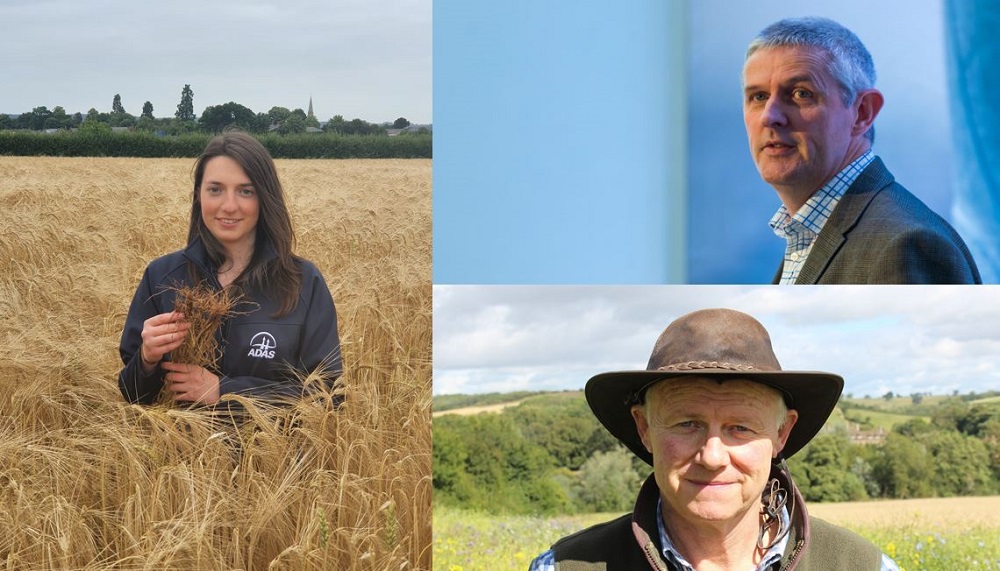Integrated pest management (IPM) roll-out
Wednesday, 15 December 2021
With IPM moving up the farming and political agendas, the AHDB Agronomists' Conference 2021 explored its usage and ways to encourage further adoption.
Integrated pest management (IPM) home
From 2022, a national action plan (NAP) will feature integrated pest management (IPM) at its core, aiming to promote the sustainable use of pesticides. With national average scores* of IPM usage hitting around 70/100, the industry is off to a strong start. However, increasing uptake requires further investment in knowledge and advice, as well as targeted financial support. And it’s all about the management of risk.
Mapping out IPM
To understand risk, the first step is to map out the IPM components. A new AHDB-funded report: ‘Enabling the uptake of integrated pest management (IPM) in UK arable rotations (a review of the evidence),’ detailed over 500 papers and articles on IPM usage. Led by ADAS, the comprehensive work is a definitive reference point for IPM and its adoption.
For the UK, the work considered 40 IPM strategies and 80 key crop pests – in total, 642 IPM situations. These were scored for effectiveness of control, the economic importance of the pest target, and aspects related to practicality and implementation.
Published across a series of tables, the review includes at-a-glance information on the most effective non-chemical control measures and how they compare to chemical control. For example, in cereals, varietal choice, sowing date and rotation were cited as particularly effective. For pest control in oilseeds, decision support, including thresholds, and the use of in-field non-crop areas were notable interventions.
Neil Paveley, Head of Crop Protection at ADAS, said: “The scores also guide research priorities. Where literature provides good evidence that an IPM intervention ought to be effective, but the strength of evidence in practice for the UK is not quite there yet, then that becomes a priority for research.”
IPM complexity
AHDB uses a ‘prevent, detect and control’ mantra as a foundation for IPM discussions. However, these simple words mask incredible complexity – especially at the crop/target-pest level.
Chloe Morgan, Senior Research Scientist at ADAS, said that IPM starts with varietal choice. The AHDB Recommended Lists (RL) allows comparisons of treated and untreated yields, indicating the potential varietal yield responses to fungicides. Varieties with a lower risk of yield loss from disease means that less-intensive spray programmes can potentially be followed.
However, there are multiple layers of complexity. For example, RL disease resistance ratings are influenced by crop-management decisions. Reflecting on recently completed AHDB-funded research, Chloe said: “If a winter wheat variety is sown relatively early, its effective septoria resistance rating will drop – compared to its disease resistance rating on the RL. Conversely, if sown relatively late, it will increase the rating. However, the opposite is true for yellow rust. Here, later-sown crops result in younger, more susceptible, plants at the time when yellow rust pressures are typically higher.”
Economic incentives
Several economic factors are key barriers to IPM adoption. Neil said: “There are many cost and risk concerns, which could be lessened with economic incentives. These could be delivered, for example, as part of Environmental Land Management (ELM) schemes and the Sustainable Farming Incentive (SFI).”
As part of a Defra-funded ELM test-and-trial project – instigated by the NFU and delivered by ADAS and SRUC – a land management plan tool was created to guide IPM decisions. It was well received by farmers and indicated potential to be used alongside SFI standards to trigger payments. Dr Paveley said: “The test-and-trial report is with Defra. Ultimately, they will decide the next steps for such a scheme.”
IPM is a knowledge-intensive process, which extends beyond productivity and economics. For example, the greenhouse gas implications of management also need to be considered. For example, with net-zero ambitions in mind, it is essential that nitrogen inputs deliver the planned return on investment. Dr Paveley said: “It is not good to invest in a crop canopy only to have it destroyed or competed with.”
Digital solutions
The potential to use digital technologies to get information to farmers’ fingertips faster was discussed at the conference. This included delivery of targeted information during the cropping/planning cycle, but also further investment in decision-support tools – including integration within farm management software.
Further information
This article provides a flavour of the IPM debate. More information is available on our IPM web page.
Integrated pest management (IPM) home
Watch the Agronomists’ Conference videos
Key organisation abbreviations
Key organisation abbreviations
AHDB – Agriculture and Horticulture Development Board
NFU – National Farmers’ Union
Defra – Department for Environment Food & Rural Affairs
VI – The Voluntary Initiative
*Source: NFU/VI IPM assessment plan responses.
Listen in (IPM podcast)
 AHDB
AHDB
Some of the IPM presenters at the Agronomists' Conference 2021. Left: Chloe Morgan, ADAS. Top: Neil Paveley, ADAS. Bottom: Phil Jarvis: The Voluntary Initiative.
Watch the presentations...
Topics:
Sectors:
Tags:

